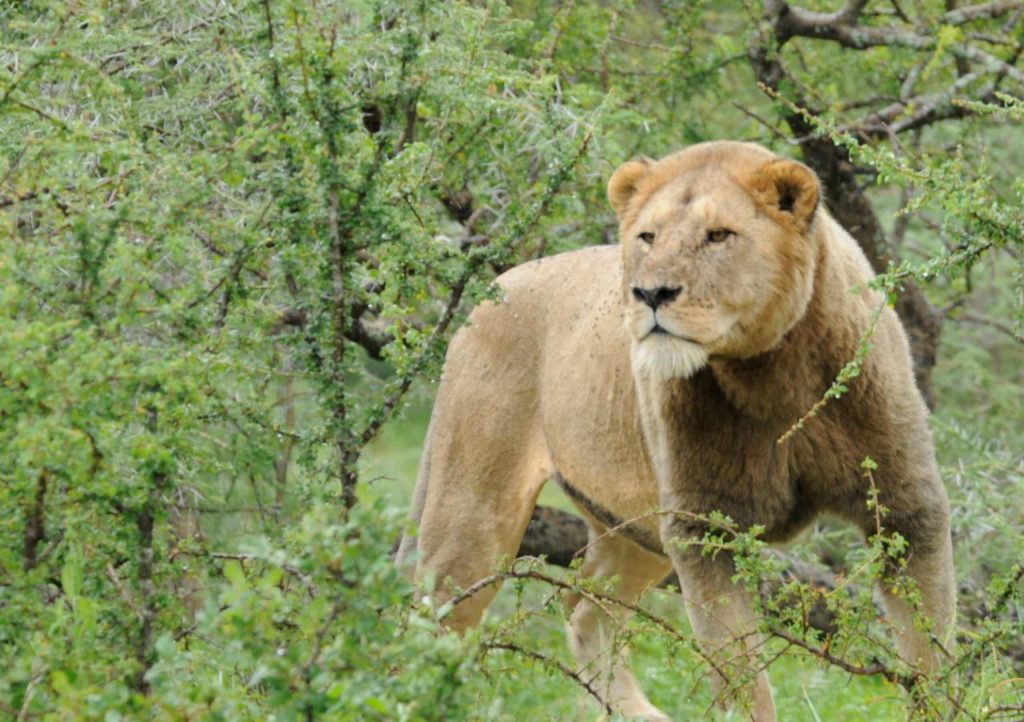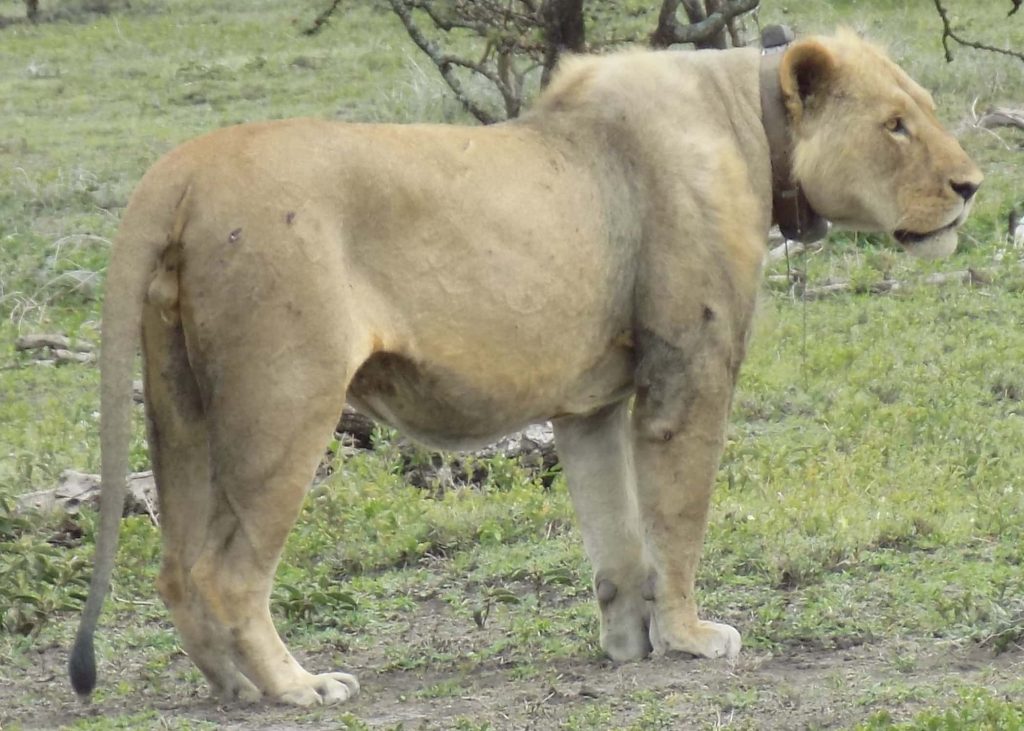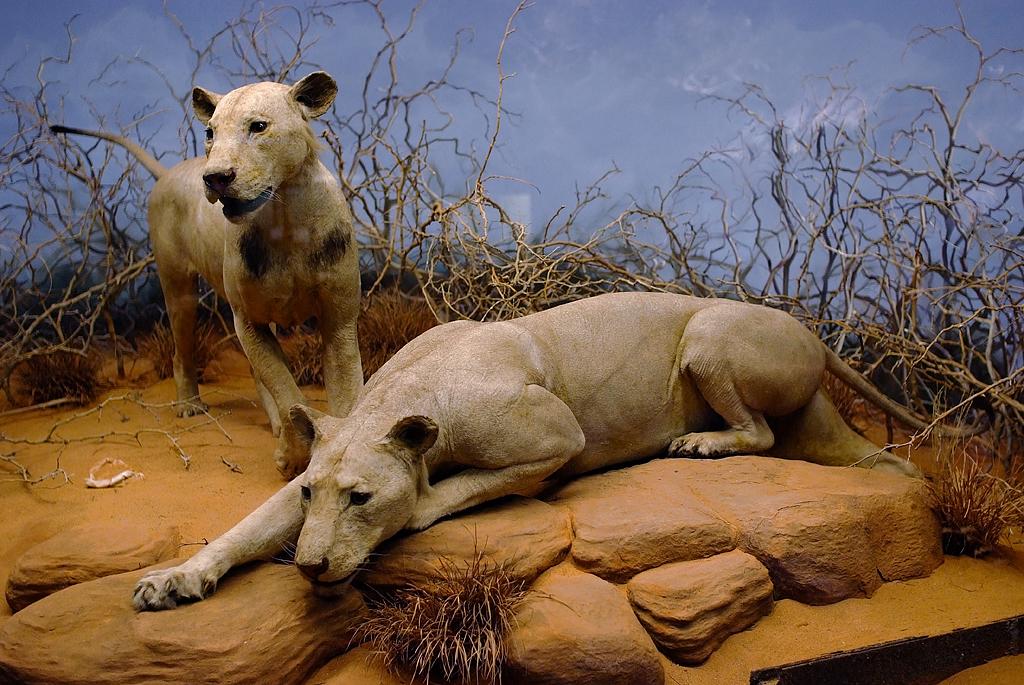So, you’ve heard of conservation efforts for different species like elephants, pandas, and tigers, right? Well, get ready to discover a unique conservation challenge that you probably haven’t come across yet – the preservation of maneless lions. These majestic creatures, known for their distinct lack of manes, face a unique set of obstacles when it comes to their conservation. In this article, we’ll take a closer look at the intriguing world of maneless lions and the efforts being made to ensure their survival. Get ready to be captivated by the fascinating world of these extraordinary animals and the challenges they face.

Introduction
Maneless lions, also known as Tsavo lions, are a unique sub-species of lions found in the Tsavo region of East Africa. Unlike other lions, maneless lions have shorter, thinner manes or even no manes at all. This distinctive characteristic has captivated the attention of wildlife enthusiasts and researchers alike, making the conservation of these magnificent creatures an important endeavor.
Conservation efforts for maneless lions are crucial as they not only serve as a charismatic flagship species, but also play a vital role in maintaining the delicate balance of their ecosystem. By understanding their ecological importance, the threats they face, and the initiatives taken to protect them, we can build a solid foundation for their survival and the preservation of their habitat.
Ecological Importance of Maneless Lions
Role in maintaining ecosystem balance
Maneless lions play a crucial role in maintaining the balance of the ecosystem in which they reside. As top predators, they regulate prey populations, preventing them from overgrazing and causing ecological imbalances. By keeping herbivore numbers in check, they help preserve vegetation and ultimately contribute to the overall health of the ecosystem.
Impact on prey population dynamics
The presence of maneless lions has a profound impact on the dynamics of prey populations. Their hunting behaviors and predation patterns influence the movement and behavior of herbivores, shaping their distribution and feeding habits. This creates a ripple effect throughout the food chain, impacting the abundance and diversity of other species within the ecosystem.
Contribution to genetic diversity
Maneless lions also contribute to the genetic diversity of lion populations. Their adaptation to the harsh environment of the Tsavo region has led to unique genetic characteristics, which in turn can enhance the resilience and adaptability of lion populations as a whole. Preserving the genetic diversity of maneless lions is vital for the long-term survival and evolution of the species.
Threats to Maneless Lion Population
Habitat loss and fragmentation
One of the greatest threats facing maneless lions is habitat loss and fragmentation. Rapid human development and expansion of infrastructure have resulted in the destruction and fragmentation of lion habitats. This poses challenges for their movement, breeding, and access to resources, ultimately leading to a decline in their population.
Human-wildlife conflict
As human populations encroach upon lion territories, conflicts between humans and maneless lions become more prevalent. Livestock depredation, retaliatory killings, and fear for human safety often result in the persecution and killing of maneless lions. Finding ways to mitigate these conflicts and promote coexistence is essential for the long-term conservation of this unique lion sub-species.
Illegal hunting and poaching
The illegal hunting and poaching of maneless lions for their body parts and trophies pose a significant threat to their survival. Demand for lion bones, skins, and teeth in various parts of the world drives these illegal activities. Strengthening anti-poaching measures and enforcing strict wildlife protection laws are crucial steps in combatting this issue.
Disease outbreaks
Disease outbreaks, especially those that affect wild carnivores, can have devastating effects on maneless lion populations. With the increasing interconnectedness of ecosystems, the transmission of diseases between domesticated animals, humans, and wildlife becomes more common. Strengthening surveillance and implementing disease prevention measures are essential for safeguarding the health of maneless lions.
Conservation Initiatives
In-situ conservation strategies
In-situ conservation strategies are essential for the conservation of maneless lions. This involves preserving their natural habitats and protecting them in their native ecosystems. Collaborative efforts between governments, local communities, and conservation organizations are crucial for the successful implementation of conservation strategies.
Protected areas and wildlife corridors
Establishing protected areas and wildlife corridors is a key step in ensuring the long-term survival of maneless lions. Protected areas provide essential habitats for lions and other wildlife, while wildlife corridors connect fragmented habitats, allowing for the movement and gene flow of different populations. Identifying and securing these areas is vital for the conservation of maneless lions.
Community-based conservation programs
Engaging local communities in conservation efforts is critical for the success of maneless lion conservation programs. By involving communities in decision-making processes and providing them with opportunities for sustainable livelihoods, the support and cooperation of local residents can be fostered. Empowering communities to become stewards of their natural resources is essential for the long-term preservation of maneless lions.
Anti-poaching efforts
Strengthening anti-poaching efforts is crucial for eliminating the illegal hunting and poaching of maneless lions. This requires increased enforcement of wildlife protection laws, collaborative intelligence sharing, and empowering local communities to act as guardians of their natural heritage. Training and equipping wildlife rangers with the necessary tools and resources are vital for combating poaching activities effectively.
Wildlife Rehabilitation Centers
Wildlife rehabilitation centers play a crucial role in the conservation of maneless lions. These centers provide a safe haven for injured, orphaned, or confiscated lions, offering them medical care, rehabilitation, and eventually, the opportunity to be reintroduced into the wild. Supporting and funding such centers is essential for the rescue and recovery of maneless lions.

Challenges in Conservation
Lack of awareness and education
One of the key challenges in maneless lion conservation is the lack of awareness and education among local communities and the general public. Many people are unaware of the ecological importance of maneless lions and the threats they face. By raising awareness through educational campaigns and community outreach programs, we can inspire action and foster a sense of responsibility towards the conservation of these majestic creatures.
Limited funding and resources
Conservation initiatives for maneless lions often face financial constraints, limiting their scope and impact. Funding and resource allocation are necessary to support research, anti-poaching efforts, community-based conservation programs, and the establishment of protected areas. Advocating for increased funding from governments, international organizations, and private donors is crucial for the success of conservation initiatives.
Political and social challenges
Conservation efforts are often hindered by political and social challenges. Competing interests, conflicting agendas, and inadequate policy frameworks can impede the implementation of effective conservation measures. Addressing these challenges requires strong political will, collaboration between stakeholders, and the integration of conservation into broader development agendas.
Difficulty in monitoring and tracking
Monitoring and tracking maneless lion populations pose significant challenges due to the vast and often remote habitats they inhabit. Traditional monitoring methods, such as ground surveys, can be time-consuming, costly, and limited in their coverage. Advancements in technology, such as GPS tracking and satellite imagery, can greatly enhance monitoring capabilities and provide valuable data for conservation efforts.
Research and Monitoring
Studying maneless lion behavior
Understanding the behavior and ecology of maneless lions is essential for their conservation. Research focuses on various aspects, including their hunting strategies, social dynamics, and response to environmental changes. By studying their behavior, scientists can develop effective conservation strategies that consider the unique characteristics and requirements of maneless lions.
Population surveys and census
Accurate population surveys and censuses are crucial for monitoring the status and trends of maneless lion populations. These surveys involve comprehensive field assessments, camera trap monitoring, and genetic analysis. Collecting reliable data on population size, density, and distribution is essential for informed decision-making and the evaluation of conservation efforts.
GPS tracking and satellite imagery
Advancements in technology have revolutionized the monitoring and tracking of maneless lions. GPS tracking collars allow researchers to gather real-time data on lion movements, home ranges, and habitat use. Satellite imagery provides valuable information on land-use changes, vegetation dynamics, and potential threats to lion habitats. Integrating these technologies into conservation strategies enhances our understanding of maneless lion ecology and strengthens conservation efforts.
Advancements in genetic research
Genetic research plays a crucial role in maneless lion conservation. By analyzing the genetic diversity, relatedness, and population structure of maneless lions, researchers can assess their genetic health and create effective management plans. DNA analysis also helps identify individuals, track lineages, and identify the origin of confiscated specimens, aiding in the fight against illegal wildlife trade.
Collaboration and Partnerships
Government agencies and NGOs
Collaboration between government agencies and non-governmental organizations (NGOs) is essential for effective conservation of maneless lions. Governments play a critical role in policy development, legislation enforcement, and the allocation of resources. NGOs bring expertise, funding, and community engagement to the table. Working together, they can create a synergistic approach to conservation that combines local knowledge with global best practices.
International conservation organizations
International conservation organizations play a vital role in supporting maneless lion conservation efforts. Through funding, technical expertise, and capacity-building initiatives, these organizations strengthen local conservation organizations and facilitate international collaboration. Their involvement is crucial for addressing transboundary conservation issues and promoting the sharing of knowledge and best practices.
Local communities and indigenous people
The involvement and support of local communities and indigenous people are key to the success of maneless lion conservation. These communities often possess traditional knowledge and sustainable practices that can contribute to conservation efforts. Empowering and engaging them as partners in decision-making, resource management, and monitoring initiatives fosters a sense of ownership and responsibility towards the conservation of maneless lions.
Scientific and research institutions
Scientific and research institutions play a pivotal role in advancing our knowledge of maneless lions and guiding conservation strategies. Through field research, data analysis, and collaboration with other stakeholders, these institutions contribute valuable insights and expertise. By fostering partnerships with scientists and research institutions, decision-makers can make evidence-based conservation decisions.
Success Stories in Maneless Lion Conservation
Reintroduction and population recovery
Successful reintroduction programs have played a vital role in the recovery of maneless lion populations in certain areas. By rehabilitating and releasing captive lions into suitable habitats, conservationists have been able to restore populations and enhance genetic diversity. These programs highlight the potential of conservation breeding and reintroduction efforts in restoring and sustaining lion populations.
Conservation breeding programs
Conservation breeding programs have proved successful in maintaining viable populations of maneless lions in captivity. These programs not only act as a safety net against extinction but also provide opportunities for education, research, and public awareness. Breeding programs ensure the long-term genetic health and diversity of maneless lions, creating a valuable resource for conservation and future reintroductions.
Local community engagement
Engaging local communities has proven to be a key factor in the success of maneless lion conservation efforts. By involving communities in decision-making processes, empowering them economically, and providing incentives for conservation, a sense of ownership and responsibility is fostered. When local communities benefit directly from the conservation of maneless lions, they become motivated to protect these magnificent creatures and their habitats.

Future Prospects and Recommendations
Promoting responsible tourism
Promoting responsible tourism can help sustainably support maneless lion conservation efforts. By implementing guidelines and regulations that prioritize wildlife welfare and minimize the negative impacts of tourism, visitors can have a positive influence on the conservation of maneless lions. Educating tourists about the importance of ethical wildlife encounters and supporting local community-based tourism initiatives can contribute to the long-term protection of these majestic creatures.
Enhancing international cooperation
Enhancing international cooperation is vital for addressing the transboundary conservation challenges faced by maneless lions. Collaboration between governments, conservation organizations, and researchers from different countries can facilitate the sharing of knowledge, resources, and expertise. By working together, we can develop effective conservation strategies that transcend borders and ensure the long-term survival of this unique sub-species.
Encouraging sustainable development
Promoting sustainable development practices is essential for preserving maneless lion habitats and minimizing human-wildlife conflicts. By integrating conservation considerations into development projects, such as infrastructure development and land-use planning, we can strike a balance between economic growth and environmental conservation. Ensuring that local communities benefit from sustainable development initiatives creates incentives for conservation and reduces dependence on natural resources.
Investing in conservation research
Investing in conservation research is crucial for improving our understanding of maneless lion ecology, behavior, and threats. By supporting scientific studies, we can generate valuable knowledge that can be used to inform conservation strategies and targeted interventions. Funding research initiatives, establishing research institutions, and encouraging collaboration between scientists and practitioners are essential for the long-term conservation of maneless lions.
Educating the next generation
Educating the next generation about the importance of maneless lion conservation is key to ensuring a sustainable future for these magnificent creatures. Integrating conservation education into school curricula, organizing awareness campaigns, and providing opportunities for experiential learning can instill a profound sense of stewardship towards the natural world. By empowering young people to be advocates for maneless lion conservation, we can build a generation that values and protects our wildlife heritage.
Conclusion
The conservation of maneless lions presents a unique challenge that requires collective efforts from governments, conservation organizations, local communities, and individuals. By understanding the ecological importance of maneless lions, recognizing the threats they face, and implementing effective conservation initiatives, we can secure a future for these majestic creatures. The path ahead may be challenging, but with awareness, collaboration, and sustained action, we can ensure the survival and well-being of maneless lions and promote a sustainable future for our planet. Now is the time to act and be the change-makers that maneless lions need.
